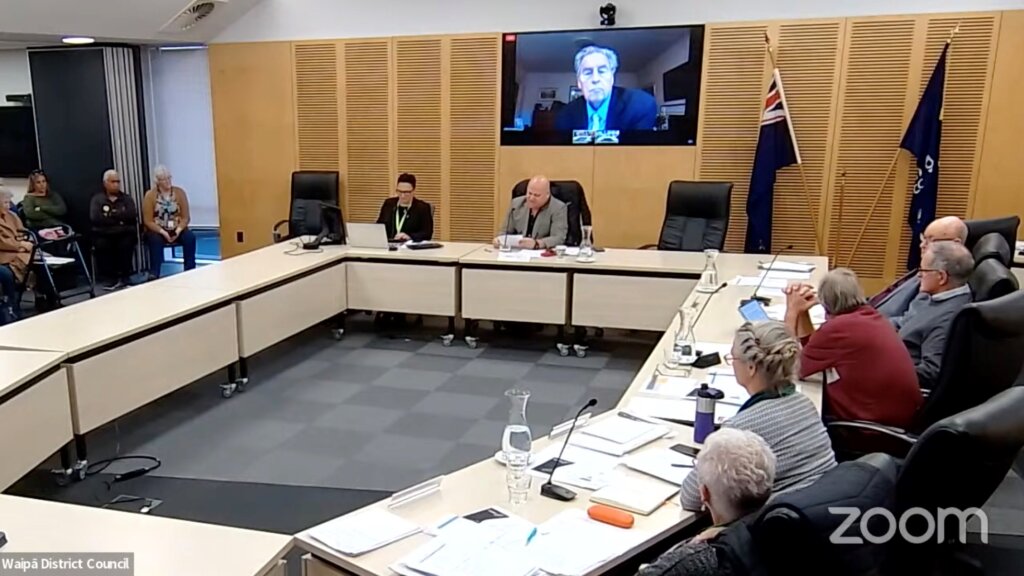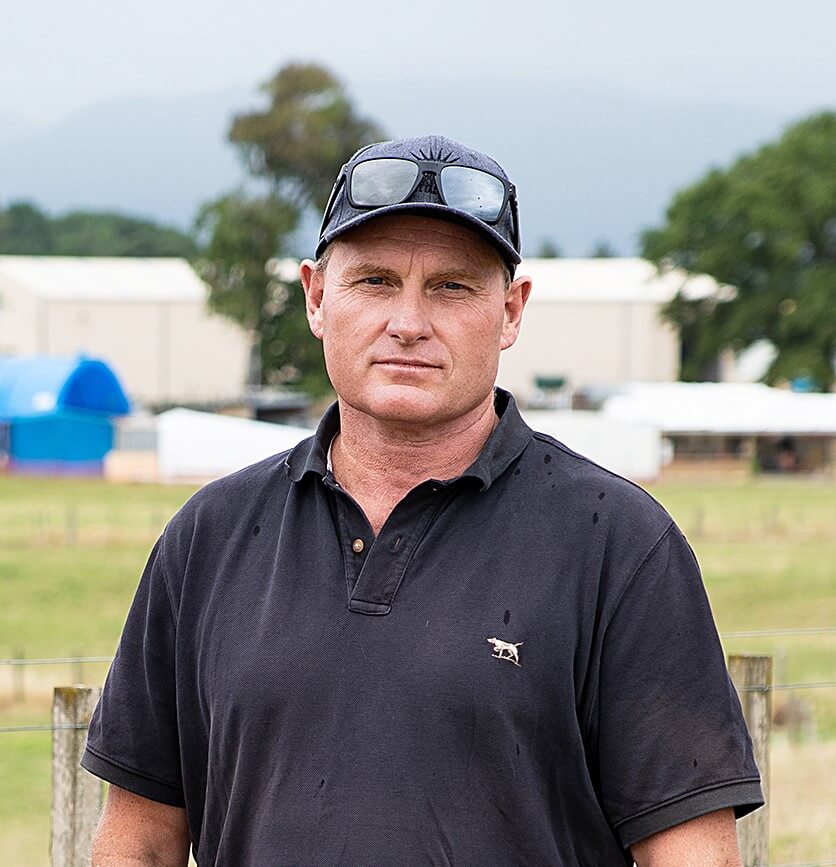
Paul Connett on Zoom at the Te Awamutu and Kihikihi Community Board last week.
Community Board members have been told the planned waste to energy plant for Te Awamutu will benefit the community – and also that it is a potential disaster.
The conflicting views came in presentations last week from Paul Connett, described as a waste management expert with nearly four decades’ experience, and the chief executive of the company which wants to build the plant, Roger Wilson.
Global Metal Solutions wants to build the plant, which would be called Paewira, in Racecourse Rd.
Paul Connett, speaking via a video link to the Te Awamutu-Kihikihi Community Board’s meeting last week from the United Kingdom, said zero waste was the future and incineration belonged in the past.
The retired professor of chemistry specialising in environmental chemistry said he had given 2500 waste management presentations in 70 countries and helped prevent up to 400 rubbish incinerators from being built.
He argued the term waste to energy deceived the public, saying they produced very little energy given the investment involved.
Both sides of the Paewira debate were presented to the board hours after a public meeting was held to oppose it.
Hours after a public meeting was held to voice opposition to the plant, a packed public gallery heard from both Wilson and Zero Waste Network Aotearoa spokesperson Sue Coutts.
Wilson lauded several key benefits which he said would come from Paewira, while Coutts said company proposals sometimes “…
overstate the benefits and… understate the risks”.
Zero Waste released a statement this week saying it was “time” for a central government moratorium on mixed rubbish incineration.
If it goes ahead, Paewira – which would take in rubbish from Waipā and beyond, sort and recycle it, then combust what cannot be recycled to power steam turbines – would be a New Zealand first.

Roger Wilson. Photo: Benjamin Wilson
Global Metal Solutions says Paewira will divert 150,000 tonnes of waste a year away from landfill, recover 80 tonnes of
recyclable material a day and convert the waste into electricity to power 15,000 homes.
Resource consent applications for the plant are being considered by both Waipā District Council and Waikato Regional Council.
Public submissions close on October 13.
Connett said there was no question air emission control equipment had improved during his years of waste management experience, but that came at a cost.
“It has made incineration extremely expensive… in fact, the most expensive way of handling waste and making electricity.”
He argued that from an environmental and health perspective incineration was a bad and risky idea for the Te Awamutu community.
Wilson countered by saying there were many design processes which would go into reducing waste at Paewira.
He said GMS operated scrap yards across Auckland, Hamilton and New Plymouth and the company was experienced in the recycling and waste management sector.
Wilson referenced a report saying more than five million of the six million tonnes of waste generated in
New Zealand annually goes to landfill.
“To put Paewira into perspective, of that 5.1 million tonnes, it is designed to process 150,000 tonnes – that’s about three percent of
New Zealand’s total annual waste.”
He said the plant would create 60 full time roles.








